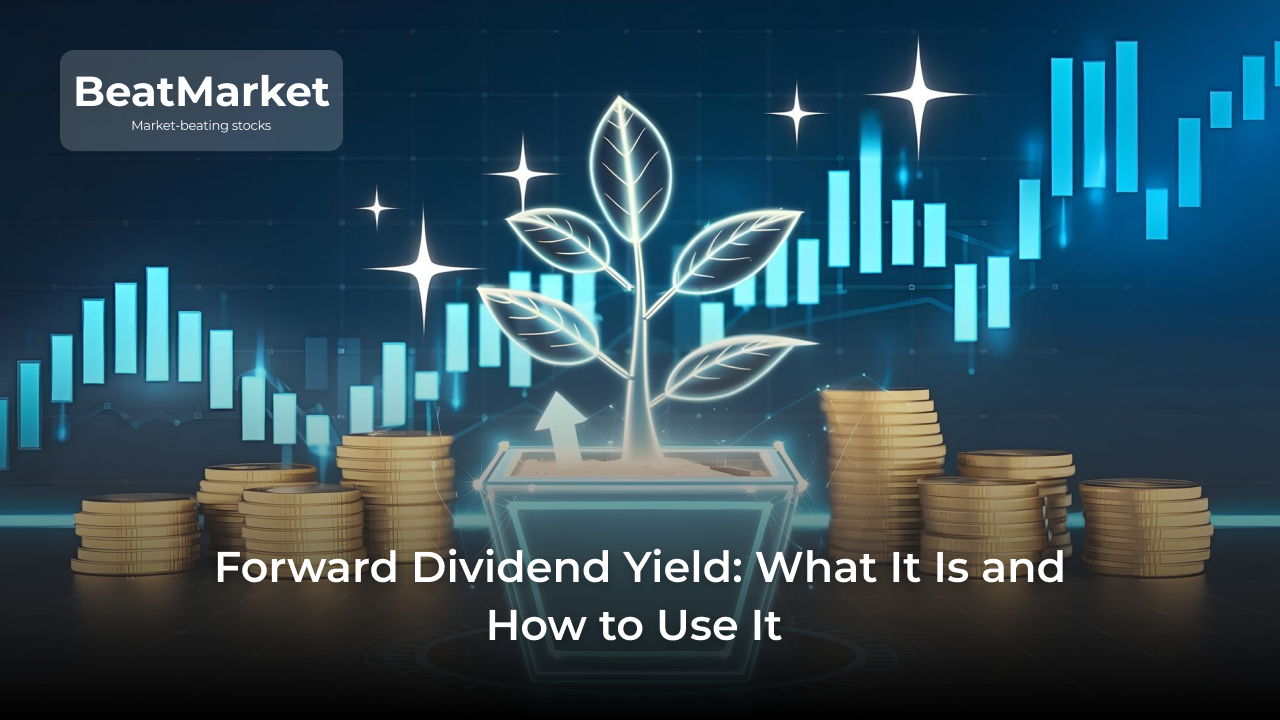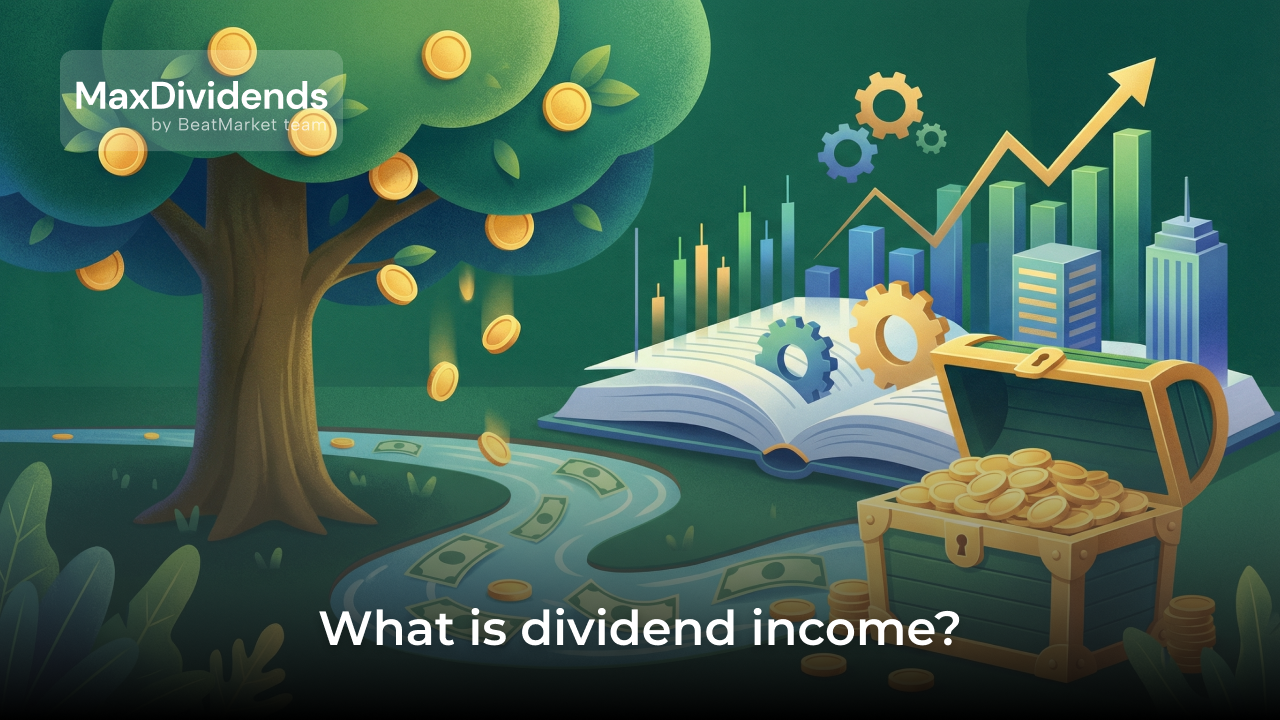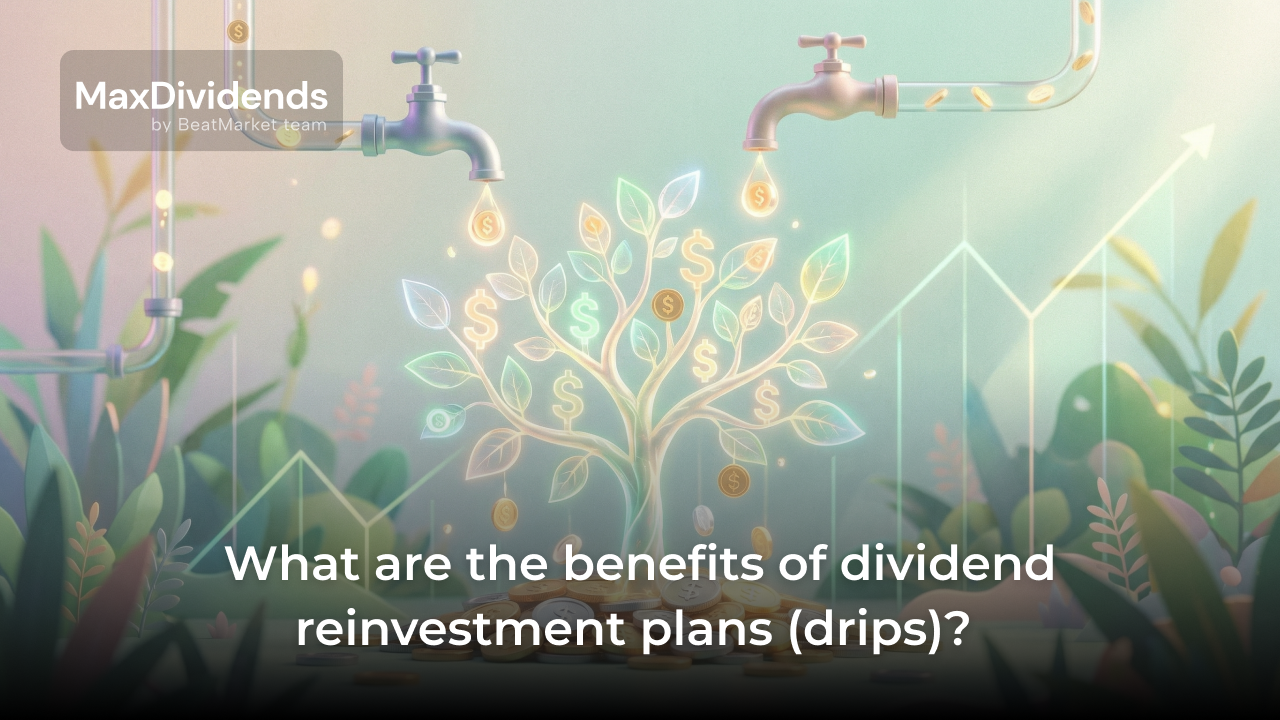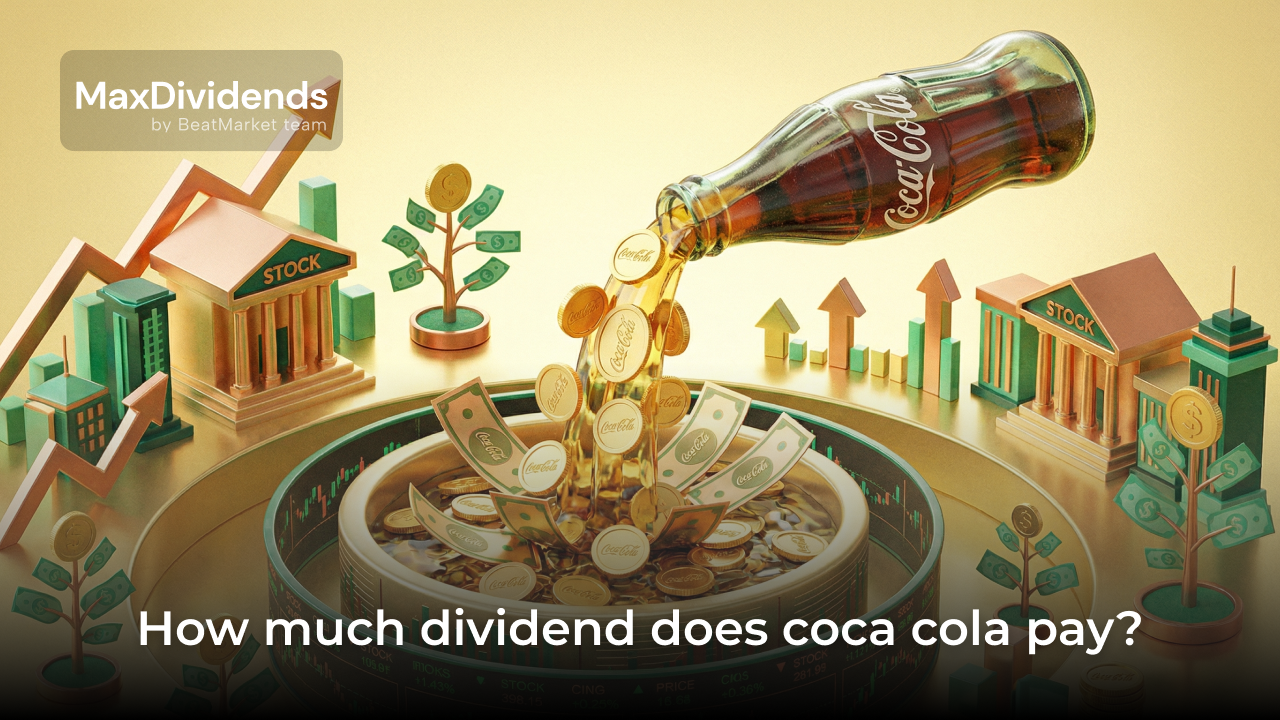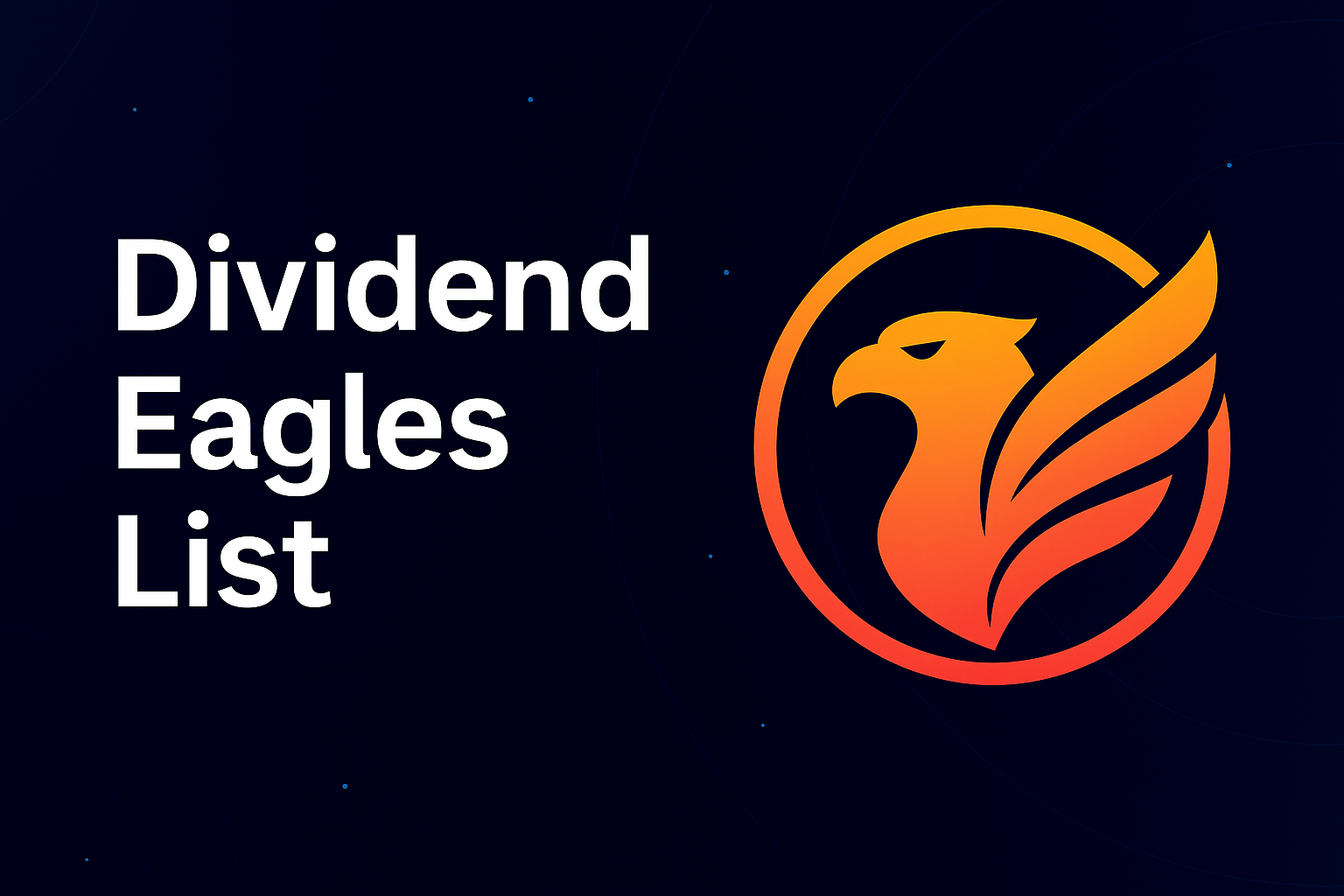For investors seeking to understand what is forward dividend and yield, forward dividend yield is an indicator that allows investors to assess potential income.
It is important to understand that this is not the trailing yield that a security will provide to investor portfolios. It does not refer to already declared payments.
Novice investors often confuse this indicator with the dividend payout ratio. The latter indicates what portion of net profits is directed to shareholders. This is one way to gauge risk. If this multiplier is above 80%, there is a high likelihood of a dividend reduction.
Key Takeaways
- Top stocks provide stable annual dividend payments. Dividend returns is an important financial metric for income-focused investors.
- Forward dividend payout ratio is a calculation of what percentage of the stock price represents the potential income for shareholders.
- Forward yields is a way to assess not only expected passive income but also the financial performance of investments. If the figure is significantly higher than historical data, it may indicate that the company is undervalued.
Table of Contents
What is Forward Dividend and Yield: Understanding Forward Dividend Yield
Dividend distribution is the payment of a certain percentage of a company’s profits to its shareholders.
A common question among beginner investors is what is forward dividend yield. This metric is calculated by dividing the planned annual dividend income by the current stock price. The expected payment amount is calculated by multiplying the last dividend by the number of payments per year.
The drawback of this metric is that it is only well-suited for companies with stable dividends. If payments are made irregularly or their amounts constantly change, it is incorrect to assess forward yield based on the last payment.
The forward payout ratio is used as a key criterion when selecting stocks for a dividend capture strategy. However, if it is the only parameter considered, there is a risk of falling into an “investor trap”.
These are known as “trap stocks” and their high yield is due to one of two factors:
- a decline in stock prices due to fundamental issues;
- a one-time large payout.
After the ex-dividend date, the stock price falls. This is referred to as the dividend gap. Quality stocks tend to close this gap fairly quickly. There are no “investor traps”.
Understanding Dividend Yields
The yield of dividend shares is an inconsistent metric. It changes even if the amount of the upcoming dividend payment has already been presented by the board of directors and approved by shareholders. The reason is that, in addition to dividend changes, the forward payout ratio also depends on stock price dynamics.
Now let’s look at what is trailing dividend yield. This is another way to assess potential ROI. Trailing dividend yield is calculated not based on financial data projections but on payments made over the last 12 months.
This metric cannot be the sole criterion in an investment strategy. Using it carries the risk of falling into “dividend traps”. Therefore, it is important to pay attention to the company’s performance and its track record of dividend payments.
What is Forward Dividend and Yield Formula: Calculation Methods
The simplest way to explain what does forward dividend and yield mean is through mathematics. The formula for forward dividend yield calculation includes two indicators:
- the future dividend payment, calculated based on the most recent dividend information and the frequency of payments;
- the existing market share price.
FDY = Forward dividend / Current price
For a company that pays its shareholders quarterly, the formula takes the form:
FDY = (Most recent dividend х 4) / Current price
From the definition of what is forward dividend & yield, it is clear that these metrics are based on past data. They do not rely on analysts’ forecasts or the company’s revenue. Investors can use them, for example, to compare with the inflation rate. This will help assess the viability of investing in a company for someone seeking passive income.
How to Calculate Dividend Yield
Let’s provide an example of the annualized dividend yields calculation using the specified formula.
The most recently declared quarterly dividend for Apple is $0.25. Payments occur 4 times a year. The forward dividend for the next 12 months is $1. The current share price is $218.27.
Investors can have an estimation of the yield of Apple’s stock in percentage terms as follows:
FDY = ($1 / $218,27) х 100% = 0,458%
The forward dividend payout ratio is 0.458%.
However, Apple increases its dividends every year. There is a high likelihood that the actual returns shareholders receive will be higher than the estimated payment.
It is possible to determine what is forward annual dividend rate not only for a particular stock, but also for a portfolio as a whole.
Importance of Dividend Yields
High dividends are an important component of investing income. They contribute over 30% to capital appreciation and serve as a protection against share price volatility. Companies with high forward dividend payout ratios are added to a portfolio to enhance ROI. Instruments with a low-interest rate environment, such as treasury bonds and savings accounts, are used to reduce portfolio volatility.
Traditionally, high yields come from sectors such as:
- industries;
- oil;
- telecommunications;
- commercial real estate.
Stable payments are provided by dividend aristocrats and kings. These stocks also perform well during periods of market volatility.
An important factor is taxation. It is essential to remember that hedging deprives the investor of the right to have dividends recognized as qualified.
Difference Between Forward, Indicated and Trailing Dividend Yields
Forward dividend yield and indicated dividend yield are synonyms. There are no calculation differences between them. Their determination only takes into account the last announced dividend payout. Trailing dividend yield is calculated based on last year’s dividend payouts.
It is important to note that the calculation uses the payment amount not for a calendar period, but for the last 12 months from the point of reference. For example, if the measure is set for March 25, 2025, the dividends received by shareholders in the timings from March 26, 2024, to March 25, 2025, will be considered.
Both forward and trailing returns are calculated on an annualized dividends basis. They also use the company’s existing share price. They are therefore affected not only by the absolute level of payouts but also by how volatile the stock market is.
Forward Dividend Yield and Corporate Dividend Policy
The board of directors determines the recommended dividend amount based on the company’s dividend policy. The latter largely depends on the phase of business growth.
Smaller businesses are forced to direct all profits toward further expansion. Even many large firms spend their profits on research and development. These are typically referred to as growth companies. Large corporations that have already captured a significant market share are more willing to reward shareholders.
Below, we will examine the most common types of dividend policies.
Stable Dividend Policy
A stable dividend policy implies that dividends depend more on long term prospects than on the profit level for a quarter or a year.
Short-term fluctuations and higher profits do not lead to higher dividends. During favorable accounting cycles, the company accumulates retained earnings. This allows it to avoid reducing payments in the future when results worsen.
For example, a company may distribute $5 per share to investors quarterly. It will not change this amount, even if the EPS increases or decreases compared to the previous quarter.
Constant Dividend Policy
A constant dividend policy implies the payment of a fixed portion of earnings. Despite the name, this approach involves significant dividend volatility. The only thing that remains unchanged is the percentage issued annually.
For example, investors receive 35% of the firm’s profit per share. Suppose last year the company had an EPS of $100. This means the dividend was $35. This year, if the company’s EPS decreases to $50, the dividend will drop to $17.50.
Residual Dividend Policy
The residual dividend policy is characteristic of companies in a phase of active development. It is aimed at long-term stability and consistent growth of the business.
This policy does not imply fixed payouts. This approach simplifies accounting. Operational expenses are paid from cash flow. The company first addresses capital expenditures and working capital, and only then considers passive income for shareholders.
Such a dividend policy does not provide high immediate profitability. However, it can yield significant benefits in the future in the form of substantial growth in the company’s capitalization.
Factors Influencing Forward Dividend Yield
Dividend yield is a relative indicator. Market volatility has the greatest impact on it. The absolute size of a company’s dividends is primarily influenced by internal factors, particularly financial results and stable cash flows.
External factors also play a role, especially sector trends. Inflation and interest rates are important as well. During periods of high rates, risk-free instruments provide good returns. At such times, many investors lose interest in risk, leading to stock price falls and an increase in forward yields.
It is not enough to simply know what is forward dividend and yield. It is essential to understand the significance of the payout ratio. This ratio indirectly indicates the stability of future payouts.
What Is a Good Dividend Yield?
The average dividend yield for companies in the S&P 500 is around 1.4%. Good dividend yields are considered to be in the range of 2% to 4.5%. Higher figures are referred to as high dividend yields.
However, this is not always a great buy. There is a risk that it may turn out to be a misleading security. A high dividend payout ratio can be the result of a decline in the share price due to the financially unstable company.
From a long-term investor’s perspective, stocks that provide steady payments and consistent growth are more attractive. Only stable companies, particularly those in the dividend aristocrats index or striving to be part of it, can offer this.
Analyzing Dividend Payout Ratios
The payout ratio indicates the proportion of profits that a company allocates to dividends. This benchmark allows for a quick assessment of future prospects:
- A low payout ratio (below 30%) is typical for high-growth companies. A large portion of net profits is reinvested in business development.
- An average ratio (30%-60%) is considered one of the optimal financial conditions. Stocks with this payout ratio are most favorable for capital appreciation.
- A high payout ratio (60%-80%) may indicate value-oriented companies. These issuers have already captured the market and prioritize stability of capitalization and interest from retail investors.
- A very high payout ratio (over 80%) can be a sign of financially unstable companies. At this level, dividends may be unsustainable.
There are exceptions to these rules. It is important to consider not only the ratio of a particular company but also the average values within the industry.
Strategies for Maximizing Forward Dividend Yield
You can increase the dividend yield of your portfolio through the following steps:
- purchase high-yield stocks (good diversification across sectors and issuers is necessary to reduce risks);
- invest in Dividend Aristocrats (which provide stable annual increases in passive income);
- utilize dividend reinvestment plans (DRIPs) to take advantage of the compounding effect.
The first method is most relevant for income focused investors looking to generate income today. The second and third methods are suited for individuals who are in the process of building their retirement capital.
Dividend Safety
From the definition of forward dividend payout ratio, it becomes clear that unusually high dividends often indicate financial difficulties for the company. Attractive yields result from stock depreciation, which occurs as investors flee from the asset.
Therefore, stocks should not be selected based solely on one parameter. It is important to consider fundamentals, such as ROA, Debt/EBITDA, P/E, PEG, and others.
A portfolio of high-dividend stocks can be balanced with risk-free investments. For example, these include money market accounts, CDs, and treasuries.
Limitations of Using Forward Dividend Yield
Dividend payout ratios are subject to market fluctuations and can be misleading. Therefore, their use as a selection criterion in making investing decisions has limitations. In addition to this indicator, it is important to consider:
- Strategic risk. It is necessary to take into account the stage of the industry life cycle.
- The cash flow statement, which shows whether the company has liquidity assets to cover its expenses.
- The “turkey problem”. Even the status of a dividend king does not guarantee that the size of dividends will not decrease.
- Payout vs. investment. Mature companies allocate a large portion of profits to dividends, which reduces the rate of stock price appreciation.
- Math. Dividend yields change as a result of the stock market fluctuations. It can increase even with a decrease in the absolute dividend amount if the stock price falls. This indicator decreases with unchanged payouts if the stock price rises.
FAQ
What Is a Good Dividend Yield?
The answer to the question of what is a good forward dividend yield is a figure in the range of 2% to 4.5%. Stocks that yield more are referred to as high-yield stocks.
What Is a Good P/E Ratio?
A good P/E ratio is considered to be below the market average (which was 28.75 at the end of March 2025). It can also be compared to the average industry ratio. To determine if the stock’s current share price is below its fair value, the P/E ratio should be compared to the average historical figure specifically for that company.
Does Tesla Pay Dividends?
No, Tesla does not pay dividends. All of the company’s profits are directed towards business development.
Can Dividend Yield Be Negative?
No, this indicator can only have a positive value. This is evident from the answer to the question of what does forward dividend & yield mean. It represents the size of future dividends and its relation to the stock price. Neither of these values can be negative.
Is the Dividend Yield Calculated Annually or Quarterly?
This ratio is calculated based on how much income a stock will generate over the course of the year. Understanding what is forward dividend and yield helps investors make informed comparisons and investment decisions based on projected annual returns. This makes it easier to compare the dividend payout ratios of stocks with the performance of other assets. Additionally, not all companies pay dividends quarterly; some do so monthly or annually.
Article Sources
- Forward Dividend Yield: Definition, Formula, vs. Trailing Yield.
- Dividend yield.
- Forward Dividend Yield.

